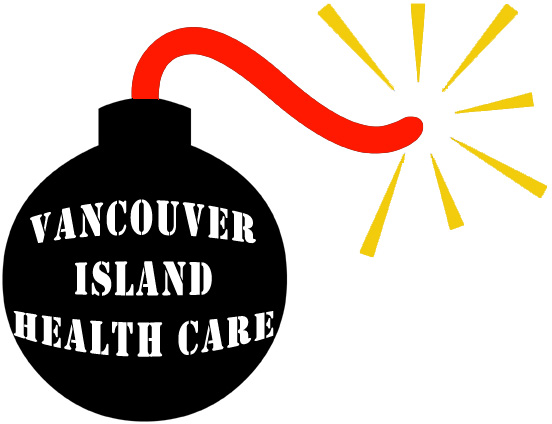Back to Newsletter Archive | Back to Island Voices
July 2009 Newsletter for Seniors on Vancouver Island

The Future of Seniors Health Care on Vancouver Island
A recent report regarding the C. difficile out break at the Nanaimo Regional Hospital does not bode well for Seniors health care on Vancouver Island. The investigation revealed a recurring problem with the system that is now used to deliver health care in British Columbia. Since the provincial government adopted the ‘Triple P’ concept for the delivery of health care it seems no one person or organisation that is responsible for the blatant and glaring problems that it has created. A representative of VIHA (Vancouver Island Health Authority) on a recent news broadcast stated that VIHA was not responsible for the lack of training and the staffing levels of the house keeping staff at NRGH. She went on to say that the contractor was operating within the terms of their contract. So that begs the question “who drew up the contract?”
‘Triple P’ or ‘contracting out’ is a candy coated way of referring to the Friedman economic philosophy of running a country, or in this case a province. Over the past 30 years it has been implemented in various countries around the world, always during a crisis, including South America, Africa, Asia and Europe with the similar disastrous results; including the demise in the delivery of existing health care and education systems, and the creation of an ever increasing number of ‘the working poor’. Institutions such as health and education cannot be delivered using multi level private contractors where no one is in a position of overall control; where no one is in a position to ask questions, or make changes and implement what is best for the end users, you and me.
On any ship there has to be a captain, where the bucks stops, and critical decisions can be made for the betterment of the whole, not just one section of society. Therefore if neither the Health Board or the various contractors are responsible for the delivery of our health care, who is? Logic says that only leaves the government in power and by extension its leader, who in this case is our Premier, Gordon Campbell.
Roy Summerhayes.
250-752-4837.
The following article on this subject recently appeared in The Victoria Times Colonist.
VIHA cuts put quality at risk
Times Colonist June 26, 2009
British Columbians didn’t vote for health-care cuts in May’s election. No party or candidate ran on a promise to force health authorities to place balancing their budgets ahead of care for the regions they serve.
Yet that is the reality that those in need of medical care will almost certainly face in the coming months, without a significant policy shift from government.
The Vancouver Island Health Authority, like the others around the province, is struggling to find more than $50 million in spending cuts. The initial focus, says CEO Howard Waldner, is on administrative savings that won’t cut care. Travel budgets have been halved and new programs, hiring or the use of consultants must be vetted by senior executives, even if the projects had been approved as necessary.
That won’t address the shortfall. The cuts required work out to $150,000 in spending every day. That can only be achieved by curbing necessary services — making people wait longer for surgery or reducing support.
The changes would come to a system that is already operating on the edge. As the recent reports into C. difficile infection and deaths at Nanaimo’s hospital demonstrated, efforts to manage with limited resources carry serious consequences. The B.C. Centre for Disease Control found that VIHA’s infection-control program didn’t have the resources — that is, funding — and that there just weren’t enough cleaning staff to do the needed work.
Health-care costs are rising. That is, as Premier Gordon Campbell has noted, in part the inevitable result of an aging population. Since 2000, the number of people in the region covered by the health authority over 75 has increased by 25 per cent. Technology, drugs, skilled-labour shortages and advances in treatment have also all driven up costs.
The budget called for a 5.9-per-cent increase in health authority funding this year. That is simply not enough to provide the needed care. That has led to the search for some $50 million in cuts within VIHA, part of a $320-million shortfall across the province.
It’s important to improve the way health-care services are delivered. And it’s important that, as a society and as individuals, we do much more to protect ourselves from preventable illnesses. The costs of obesity, poor diet, excess alcohol use and other self-inflicted conditions are enormous. But there is no justification for depriving the public of needed care to meet an arbitrary budget cap imposed on health authorities by the provincial government. British Columbia can afford the cost and the public is willing to pay it.
The alternative to these cuts — and another $57 million VIHA expects to have to chop next year — is the equivalent of an extra $7 a month for taxpayers in the region.
We can afford to pay for health care. These cuts are risky and unnecessary.
© Copyright (c) The Victoria Times Colonist
Top
